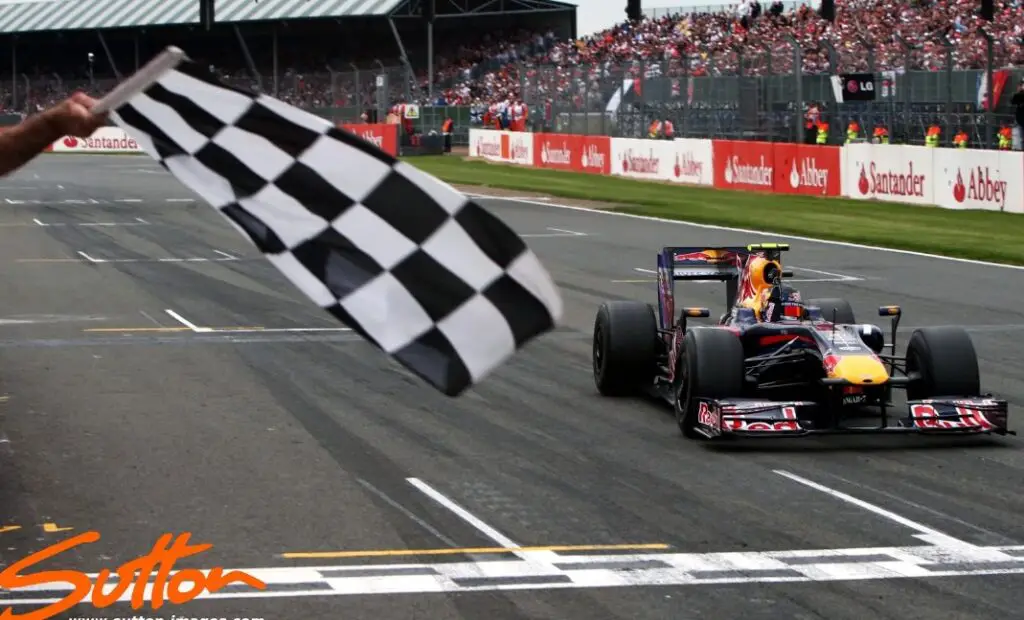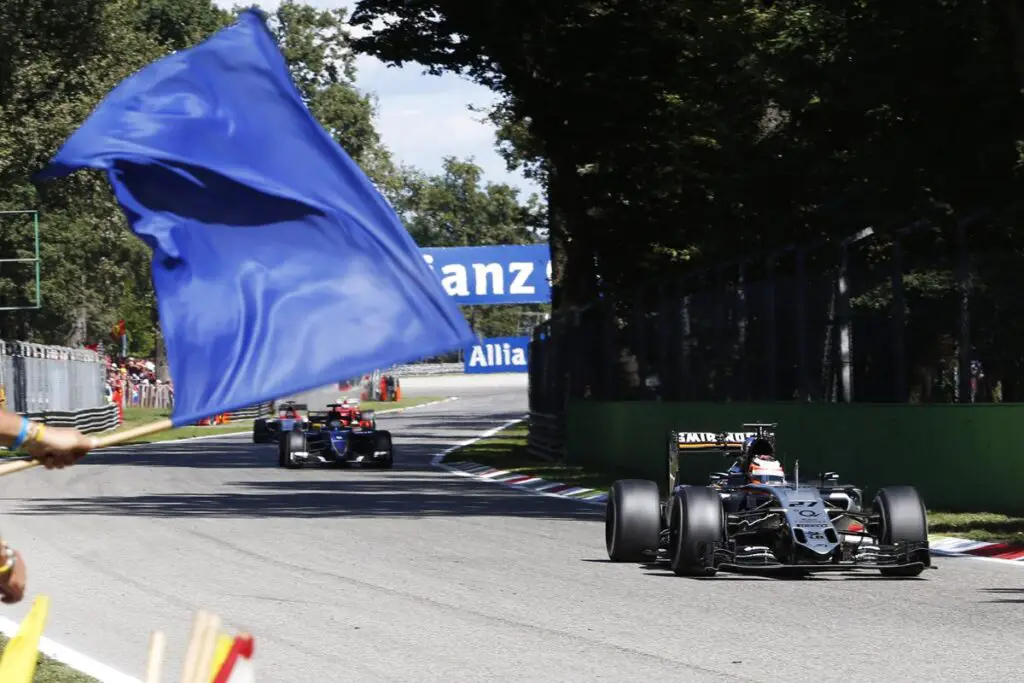Watching a car race is a thrill. Unimaginable speed, vigorous competition, foolhardy driving tactics — all of that makes car races so popular. It’s exciting and addictive, and you need to understand all the nuances of the race to enjoy it to the max. Today, we’ll be happy to explain to you the language of the flags used in car races, and you’ll love them even more. Promise.
Everything happens extremely fast. It is, after all, a race. The speed of the vehicles is high (Formula 1 car easily exceeds the 185 mph mark), and the decisions are made in split seconds. Besides, it’s noisy, and a driver can fail to hear critical info, which can be crucial.

The flags are used for communication with drivers and to inform the spectators about what’s happening on the track and at the Finish Line. We’ll tell you about the flags used at the most famous races: Formula 1, Indianapolis 500 (IndyCar), and NASCAR, though many races use the same or similar systems of signs.
Aren’t you curious to find out if the colors in racing have conventional meanings, like a white flag for peace or a red flag for danger? But before we do that, let us answer the question in the headline.
A blue flag with a diagonal yellow stripe is one of the IndyCar and NASCAR race flags. When a track marshal raises this flag, it’s a warning for a driver about another car moving at a higher speed, about to overtake them.
This flag is waved as a warning and implies that the slower driver should give way to the leader. However, it’s not mandatory. This flag is sometimes called the ‘courtesy flag’.
Flags and races
Racing flags can be status flags or instruction flags. Special employees called track marshals (or flagmen) use them. And the grand marshal starts the race.
Status flags give the racer crucial information about the race. They are the yellow flag, green flag, yellow and red striped flag, red flag, and white flag. Instruction flags inform one driver about something or give them instructions. They are a black flag, a black flag with a white saltire, blue flag. And the checkered flag has a special position. Let’s start with it.
A checkered flag
A black and white checkered flag signals the end of the race. That’s why it’s become the symbol of victory and often appears in photos. In F1 and NASCAR races, one black and white checkered flag signal the end of the race. In IndyCar, a grand marshal waves two flags at the same time. And in NASCAR, they have a special checkered flag made for Victory Lane with information about the particular race.
In NASCAR, a green and white checkered flag marks the stage end and the beginning of the caution period (usually happens after an accident) when the drivers must follow a safety car.
An interesting fact: if a race is interrupted in the final laps of the race, and a cautious period follows, giving way to the next attempt to finish, NASCAR grants three attempts at a green-white-checkered finish. After that, a green-white-checkered finish is not allowed.
Status flags
- A yellow flag. A so-called ‘caution flag’ is a warning sign about a risky situation on the course. A collision, foreign objects on the track, change in weather, etc. In F1, when a marshal waves a yellow flag, the hazard is on the track itself. If the flag is fixed, it’s close to the course.The racers get behind the pace car and follow it to safety (a pace car is a special vehicle that leads the drivers setting ‘the pace’ a.k.a. speed). If a flagman waves two flags at the same time, the track is blocked. In IndyCar and NASCAR auto racing, they use similar rules for one flag and the term ‘local yellow’ flag zone.
- A green flag. It makes perfect sense that a green flag signals the start of the race. In NASCAR and IndyCar, a green flag can also mean the end of the caution period. In F1, they use starting lights now instead.
- A yellow and red striped flag. This racing flag with vertical red stripes is displayed when the racing surface has been compromised. It can be oil or other substances on the track that make it slippery.
- A red flag. A red flag indicates race interruption for whatever reason. When a track marshal waves a red flag, drivers must return to the pit lane and wait for further instructions. In NASCAR, a flagman waving red and black flags simultaneously signals the end of a qualifying or practice session.
- A white flag. For the F1 drivers, a white flag is displayed at the end of the practice. For NASCAR and IndyCar, a white flag signals the coming final lap. If for some reason, the race doesn’t end with that one lap, it will continue under the green flag conditions.

Instruction flags
- A black flag. A black flag waved for a certain racer is an instruction to return to the pit lane. In many cases, it means disqualification or penalty, but could be a requirement for repair. In Formula 1, such violations as provoking a crash, exceeding the pit lane speed limit, and some others can be justifications for a black flag.A black flag with a white saltire is used in NASCAR to show the racer that they are disqualified. In Formula 1, a black flag with an orange circle means that the driver must leave the racetrack and return to the pit box due to a mechanical problem.
- A blue flag. A blue flag is used in Formula 1 for the same purpose as the blue flag with a yellow stripe in NASCAR and IndyCar. It warns the driver that another vehicle is catching up and will overtake them. The driver should make way for the approaching vehicle. And imagine how hard it is to do, especially if you are a lead driver.In NASCAR, a blue flag is a sign of an upcoming problem that is hard to identify for the driver (only on road courses). The red flag period is not appointed, and the race continues under green-flag conditions.

Final thoughts
Racing flags are a great way for race officials to sustain order and safety. They warn drivers about potential danger or an approaching faster car, indicate the Finish Line, and show that there is only one lap left in the race.
Different colored flags are hard to miss and easy to remember. If you know the meanings behind the colors, you’ll have even more fun watching the races.
Frequently asked questions
Such a flag warns the driver about faster cars (or a car) catching up. The driver should vacate the lane and let the race leader pass.
This flag indicates that a car behind a racer is moving faster, and the racer should make way for the leader.
A blue flag with a yellow stripe is waved when a car that moves at a higher speed is approaching the racer, and they should give way.
